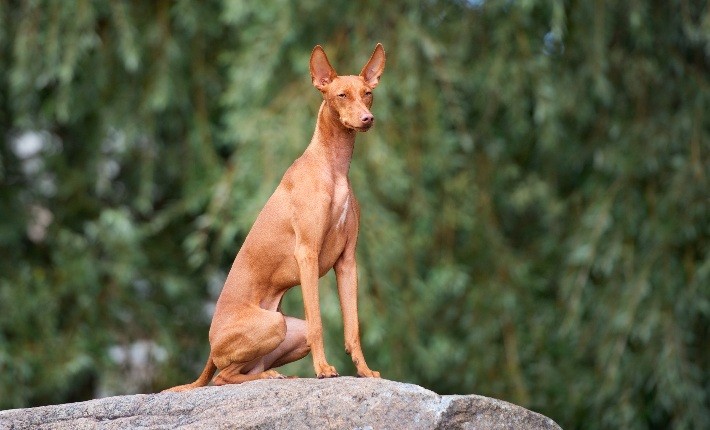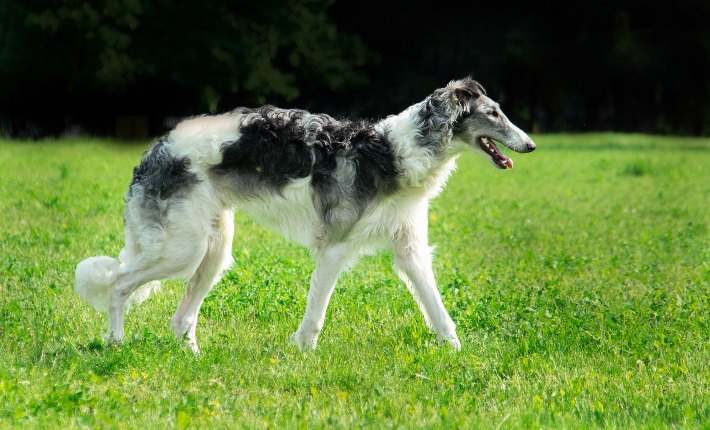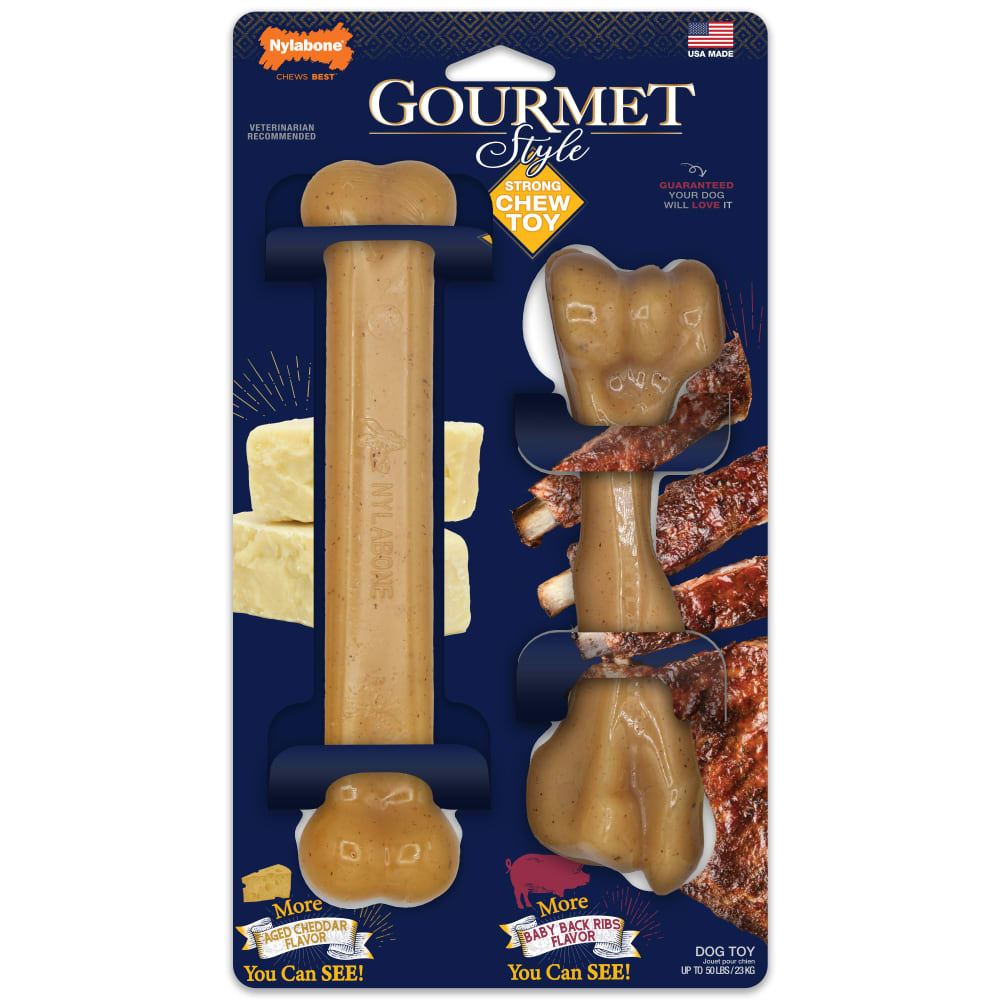10 Hound Dog Breeds & Their Origins
Did you know the Hound Group contains some of the world's oldest and most treasured dog breeds? Hounds have traveled with all kinds of people throughout the ages, serving as regal confidants for rulers, skilled partners for hunters, and loving companions for pet parents everywhere. Of the nearly three dozen recognized hound dog breeds, we've rounded up 10 with some of the most unique histories!
What Is a Hound Dog?
Hound dogs are a diverse group of breeds that were generally bred for hunting. They're broken into two groups:
Scenthounds – These dogs' sense of smell is among the best in the canine community, originally helping hunters track down game from miles away. Scenthounds appreciate activities that stimulate their incredible sense of smell, such as sniffing during long walks, playing hide & seek, and guessing which hand has a chew treat in it!
Sighthounds – Whereas scenthounds work with their nose, sighthounds use their sharp vision to hunt. Their slender bodies and long legs make them remarkably fast sprinters, and they maintain an intense prey drive. For those reasons, it's important to keep sighthounds away from other animals when you take them outside.
Hound dog breeds are very loyal, but their independent personalities and strong hunting instincts often make them difficult to train. It's important to teach your dog commands early and often to avoid behavioral problems down the road.
🐶 Related: Types of Dog Breeds
Small Hound Dog Breeds
While a floppy-eared furry friend with a droopy face might come to mind when you hear the word "hound," these breeds cover an incredible range of shapes, sizes, personalities, and abilities. These small hound dog breeds run the gamut of physical and social traits.
Basenji

The Basenji is believed to have originated around 3000 B.C.E., making them one of the world's oldest dog breeds. Artifacts from ancient Egypt, Babylon, and Mesopotamia depict Basenji-like dogs, and they were trained as hunters in the modern-day Democratic Republic of the Congo.
The time-tested Basenji is not your typical breed. They're often described as cat-like dogs due to their aloof personality and dedicated self-grooming behavior. Furthermore, they're "barkless"—they make a noise that more closely resembles a yodel! Basenjis are prone to destructive behavior when they don't get enough stimulation, so keep some engaging chew toys available!
Beagle

The sassy Beagle has a centuries-long history as a tracking dog! They are thought to have descended from Talbot Hounds during William the Conqueror's 11th-century campaign into Britain, according to the American Kennel Club. They helped English gentlemen track hares as far back as the 16th century, hunting in packs alongside their human companions.
Beagles' heritage as group hunters contributes to their outgoing, playful personality. They're great family dogs, and as a bonus, they produce very little doggy odor! Their tracking instincts can get them into trouble, though. It can be difficult to capture a Beagle's attention once they've picked up a scent, so they're not great candidates for off-leash walking.
Cirneco dell'Etna

Pronounced cheer-nek-o dell-etna, this rare dog breed was named for Mount Etna—Europe's largest active volcano. These sighthounds call the Mediterranean island of Sicily home, where they were bred to hunt fowl and small mammals more than 2,500 years ago, according to Wag! Today, over half of the Cirneco dell'Etna population remains in Italy.
These dogs are as fast as they are graceful, zipping along with their sleek, long legs. They have a short coat that's easy to maintain, making the Cirneco dell'Etna a hardy furry friend if you're lucky enough to find one. They're also extremely affectionate, so it's best to keep them company as often as possible.
Dachshund

Meaning "badger dog" in German, the Dachshund was originally employed for digging these small animals out of their dens. They've been hunters and family companions since the Middle Ages, with jobs ranging from tracking to protecting the homestead. In more recent history, Doxies have been prized by some of history's most famous figures like Queen Victoria, Andy Warhol, and Pablo Picasso, according to Britannica.
"Wiener dogs" have one of the most recognizable appearances in the dog world, stealing hearts with their long, hot-dog-shaped body. They are smart and need lots of mental exercise to feel their best, along with some mild daily exercise. Doxies also make good watchdogs and are quick to alert their pet parents with a loud bark.
Italian Greyhound

These iconic sprinters look like a smaller version of the Greyhound, topping out at about 15 pounds. Despite their name, archeological evidence suggests Italian Greyhounds were first bred in modern-day Greece and Turkey about 2,000 years ago, according to the Italian Greyhound Club of America. These noble furry friends were viewed as status symbols throughout much of European history, making their way into the lives of figures such as Frederick the Great, Catherine the Great, and Queen Victoria.
Italian Greyhounds are perfectly content enjoying some quality couch time with their pet parents, but they do need daily exercise and appreciate any opportunity to use their powerful legs. Despite their regal appearance, these dogs are lovey-dovey around their favorite people and always up for playtime. They do have short coats, so it's important to keep them warm in chilly weather!
Large Hound Dog Breeds
Bigger hunting dogs often mean bigger prey! These large hound dog breeds were initially bred to track down heftier animals, and many have achieved legendary status among rulers and nobility.
Afghan Hound

Nobody knows exactly when or where the Afghan Hound came about, but they are thought to have originated near modern-day Afghanistan, India, and Pakistan several thousand years ago. They flushed out rabbits and even gazelles for nomadic tribes during those early years, according to Wag! Ever since, they've maintained an elevated status worldwide for their long, glorious coat and dignified personality.
Like many different breeds of hound dogs, Afghan Hounds are born with a strong prey drive and should be leashed when taken on walks. Their personality never ceases to amaze, as these dogs have been described as everything from brave, noble, and aloof to shy, silly, and playful. As you might expect, that silky coat requires lots of maintenance; regular brushing and frequent baths are a must!
American Foxhound

The American Foxhound might not be as old as some other hounds on this list, but their origin story is truly one of a kind. First U.S. president George Washington is often credited for developing the breed, having crossed French Foxhounds with other hounds he received as gifts, according to WebMD.
The American Revolutionary War hero was an avid fox hunter, and his new breed featured the speed and sense of smell needed to catch these animals. (Check out our article about popular presidential dogs in U.S. history to discover more famous furry friends and the leaders who cared for them!)
American Foxhounds are good-natured dogs that get along well with the whole family—including cats! They crave exercise and need activities to keep their intelligent minds active. These hounds have a short, hard coat that was initially developed to protect them from shrubs and vines during hunts, and it can be managed with occasional grooming.
Basset Hound

These long-eared dogs originated in France during the 6th century. Hunters employed packs of Basset Hounds to drive rabbits, hares, and other small prey from dense undercover into open terrain for easier capturing, according to the Basset Hound Club of America. These brave dogs have even been known to track deer, wild boars, and bears throughout history!
Bassets' calm, easygoing, and adaptable temperament makes them great dogs for apartments and condos. Those famously long ears can easily catch debris, so it's best to clean them as frequently as possible. The Basset's scenting ability is (almost) unmatched in the dog universe, second only to the…
Bloodhound

The name "Bloodhound" is derived from "blooded hound," a reference to their heritage as one of Europe's earliest purebred dogs. They likely descend from the St. Hubert Hound—a similar breed first appearing in Europe around the 8th century—and it's believed William the Conqueror brought them to England during his 1066 invasion, according to VCA Animal Hospitals. These hunters have been used to track everything from deer and elk to wild boars and rabbits.
The Bloodhound's nose is so strong, it became the first animal whose evidence could be admissible in U.S. courts, according to Guinness World Records! Despite their hunting prowess, Bloodhounds are agreeable and generally get along well with other pets. They're notorious droolers and have skin folds that can get dirty, so it's wise to keep some grooming wipes on hand.
Borzoi

Of all the different breeds of hound dogs, the Borzoi is among the fastest. They can reach speeds close to 40 miles per hour, which has helped them catch prey for hundreds of years. Borzois originated in 16th-century Russia and had the challenging duty of pursuing wolves, according to Britannica. In the generations that followed, they became popular among the nation's nobility.
The long-snouted Borzoi is defined by a slender build and tremendous athleticism. They should get at least an hour of exercise each day, and they also appreciate dog brain games to keep their mind busy. Despite their immense quickness, Borzois can be mellow and easygoing. In fact, they're one of the quietest dog breeds you'll meet.
A Hound for Every Home
No matter your lifestyle, there's a hound dog breed just for you! These highly skilled pooches offer a wide range of abilities that have been cherished for millenniums, and they continue to be excellent companions. Just be sure to let them work their nose, eyes, and legs as often as possible to help them stay in touch with their instincts!
The many different hound dog breeds aren't the only hard-working furry friends with a long history. Check out these popular herding dog breeds and what they do.
FOLLOW US!


.jpg?h=&hash=72BBAF51CC8D5847AACB5F8F3A40CDDA)



